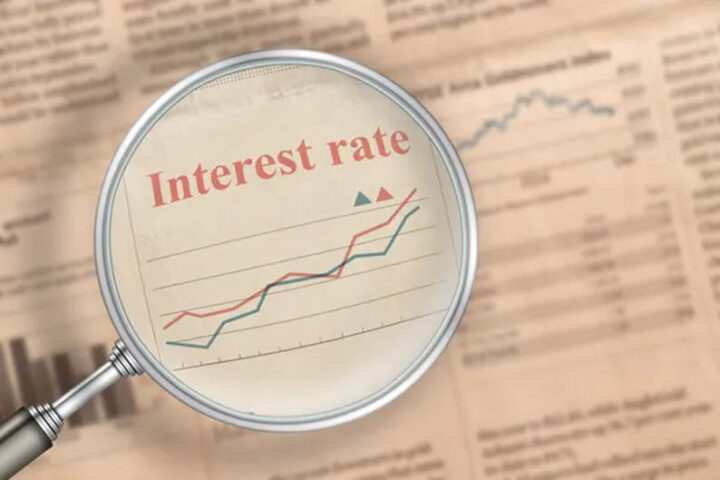By Jeffrey Halley
It was another night of tail-chasing, this time led by Goldman Sachs that said a US recession is a real possibility and that the US Dollar might fall as a result. That of course would lead to terminal Fed Fund rates sooner, so sell US Dollars and buy US bonds.
Oddly enough, the eternal bottom fishers of the equity market didn’t follow suit, neither did oil markets, which rose again overnight, despite an EU deal on banning Russian imports continuing to be held up by Hungary.
Equity markets are creeping higher in Asia Tuesday as Shanghai records a third day of no covid-19 cases outside of quarantine facilities.
The world should know by now that in a covid-zero country, the authorities have to get lucky 100% of the time, and the virus has to get lucky once. I won’t pour too much water on the optimism, I’m as keen as anyone for China to move past this.
In fact, it is right to start being nervous about recessions. Apart from having any faith in Federal Reserve forward guidance, given their track record these past two years, we should all get nervous when they say, “soft landing.”
Overnight, the Bank of England governor said there wasn’t much he could do to stop inflation from hitting 10% this year. He was particularly concerned about food prices, with the impact on that value chain from the Ukraine-Russia conflict yet to be fully felt.
He did trot out the favoured central bank mantra of unforecastable events causing inflation to accelerate; I don’t completely agree with him there. In any case, concerns around recessions make me feel that a decent correction lower from the US Dollar and US yields are increasingly likely.
That should provide some relief to the Euro and Asian currencies and possibly gold and cryptos; at least until the Fed hikes by another 0.50% in June.
The data calendar isn’t giving us too many clues in Asia on Tuesday.
Singapore’s non-oil exports held steady in April on a YoY basis but fell heavily, MoM. Thailand’s Q1 GDP barely exceeded forecasts as it rose 2.20% YoY.
Meanwhile, Indonesia’s trade surplus in March leapt higher to $7.56 billion, thanks to a near 48% jump in exports YoY, with imports climbing a below forecast 31.0%. Jakarta Airport was mobbed on Friday, and the infamous traffic is back, so Indonesia is definitely rebounding for now.
If nothing else, it reinforces the thesis that commodity-exporting countries are likely to remain a least-worst choice in the stagflationary environment of 2022.
Later Tuesday we receive India’s April WPI for food, manufacturing, fuel, and inflation. All of those data points have upside risks and could lock and load another Reserve Bank of India rate hike next month.
UK doom and gloom
Weak UK Employment data Tuesday afternoon could deepen the gloom around the British Pound, especially with the BOE raising the white flag over inflation and pricing in a recession next year.
The saga of the Northern Island Protocol continues and is another risk point for UK markets, if the government decides to enact legislation unwinding part of it unilaterally, provoking a trade response from Europe.
US Retail Sales Tuesday evening should be good for some volatility, especially if it comes in lower than the expected 0.90% increase MoM for April.
We also get manufacturing and industrial production as well. Weaker than expected numbers will increase the R-word noise and could see the US Dollar accelerate lower. Throw in the usual mix of Federal Reserve talking heads and another chop-fest session for New York looms.
Asia’s next major data point this week will come Friday when China announces its one and five-year Loan Prime Rates. We should expect the 3.70% 1-year LPR to get trimmed, but the PBOC has consistently disappointed on this front this year.
Asian equities edge higher
The seeds of a general relief rally didn’t land on Wall Street equities overnight, which had a mixed session, likely because it was driven elsewhere by recession concerns. The S&P 500 fell by 0.39%, the Nasdaq fell by 1.20%, and the Dow Jones edged 0.12% higher.
In Asia, hopes that the worst is past for the Shanghai lockdowns have prompted US Futures to rise. Nasdaq futures have jumped by 0.65%, with S&P 500 futures climbing 0.35%, and Dow futures adding 0.25%.
Hopes that the Shanghai lockdowns will ease, along with the ensuing supply chain disruptions have been enough to lift Asian equities as well, which are staging a modest bounce in an otherwise quiet day. Japan’s Nikkei 225 has risen by 0.25%, with South Korea’s Kospi rallying by 0.84%. Taipei is also tracking the bounce by Nasdaq futures, climbing by 1.03%.
In China, the Shanghai Composite has added 0.30%, with the narrower Shanghai 50 rising by 1.07%, and the CSI 300 climbing by 0.88%. The speculative casino of the Hang Seng has leapt 2.03% higher, gaining an additional tailwind from China developers today.
With Hungary still stalling an EU ban on Russian oil imports, European markets should have an excuse to open cautiously higher Tuesday. Robust Eurozone and Employment data in the evening could dampen any rally as it brings the prospect of ECB rate hikes back into view, possibly as soon as June.
Oil prices remain firm
Oil prices have remained near multi-week highs this week, supported by surging gasoline and distillate prices in the US, and fears around an EU ban on Russian oil imports remaining in play. If markets start pricing in peal-Shanghai-lockdowns, that will be an additional supportive tailwind for oil prices.
Brent crude rose by 2.45% to 113.85 a barrel overnight, where it remains in subdued Asian trading. WTI rose by 3.30% to 113.65 a barrel, where it remains in Asian trading. The gap between Brent and WTI has closed to zero over the past two sessions, highlighting the squeeze on refined supplies in parts of the US.
Resistance at $115.00 a barrel for Brent has capped gains once again. Failure signals a retest of $120.00 in the sessions ahead. Support lies at $108.80. WTI has taken out resistance at $111.50, which now becomes support. It is now threatening the top of my longer-term range call at $115.00.
Gold stages relief rally
Having wilted over the past two sessions, gold staged a corrective 0.72% rally to $1825.50 an ounce overnight, edging 0.16% higher to $1827.75 in Asian trading. A softer US Dollar and softer US yields overnight saved gold from further losses, but it remains completely at the mercy of US Dollar weakness for support.
The overnight lows around $1789.00 forms initial support, followed by $1780.00. Failure of the latter suggests a deeper correction to $1700.00. Gold has resistance just above $1830.00, followed by the 200-DMA at $1836.50, and then $1850.00. Only a sudden US Dollar sell-off is likely to change the bearish technical outlook.
Jeffrey Halley is Senior Market Analyst, Asia Pacific at OANDA
Opinions are the author’s, not necessarily that of OANDA Global Corporation or any of its affiliates, subsidiaries, officers or directors. Leveraged trading is high risk and not suitable for all. Losses can exceed investments.








